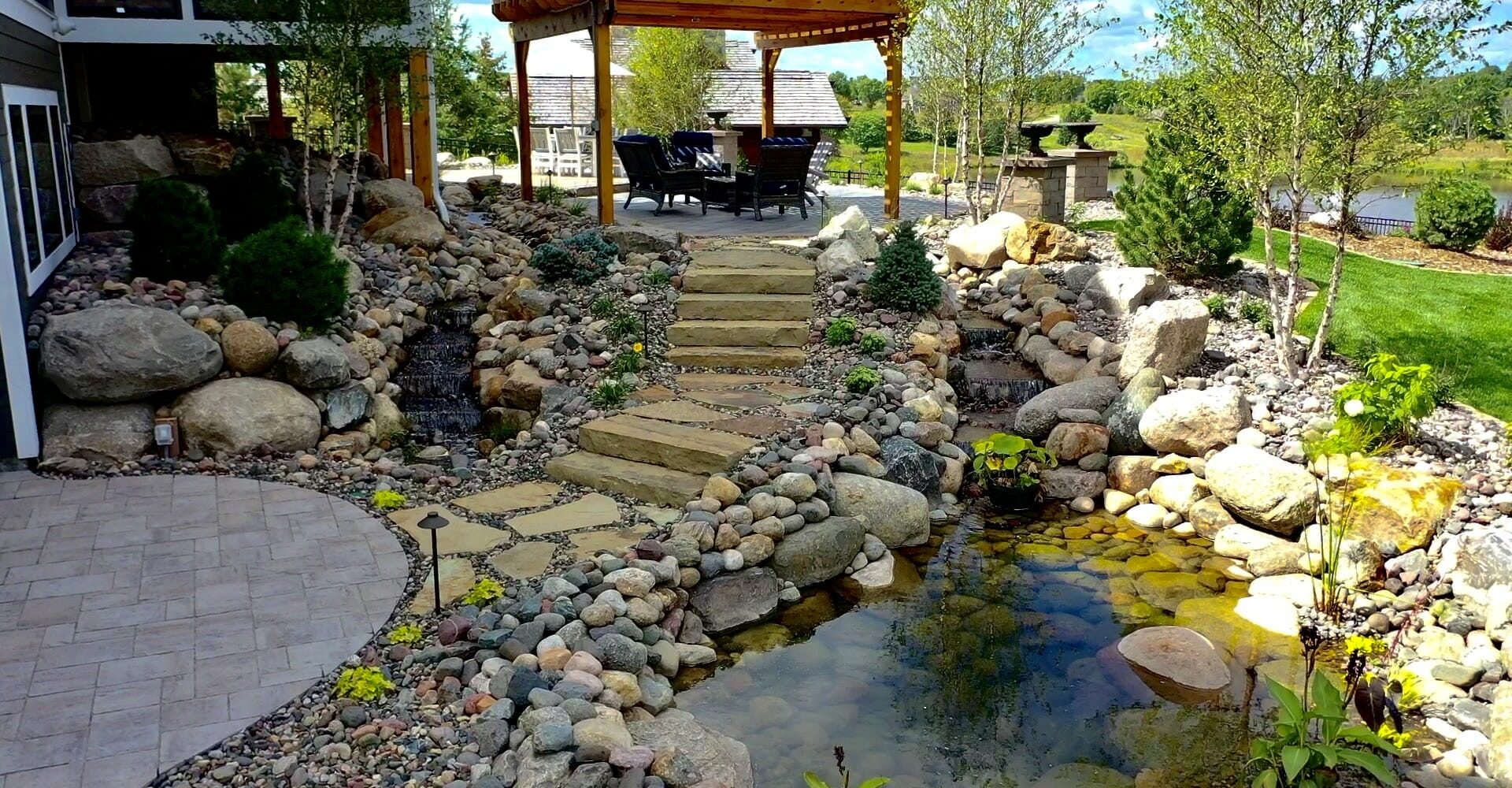
A well-designed garden is more than just a collection of plants; it’s a harmonious blend of nature and structure. One of the best ways to elevate your outdoor space is by incorporating decorative concrete walkways. Decorative concrete walkways are stylish and functional pathways that enhance the beauty of a garden while providing durability and ease of maintenance. They are popular because they offer a wide range of design possibilities, resist weather damage, and require less upkeep than natural materials like stone or wood.
In this article, we’ll explain why these walkways provide a perfect balance of durability, versatility, and aesthetic appeal, making them a preferred choice for homeowners looking to enhance their gardens.
Why Choose Decorative Concrete Walkways?
Popular Decorative Concrete Styles
Installation Considerations
Enhancing Walkways with Landscaping
Cost & Maintenance Tips
Decorative concrete walkways offer several advantages over other materials, making them a practical and stylish choice for any garden setting. Compared to brick, stone, or wood, decorative concrete walkways are more cost-effective, require less maintenance, and are highly customizable. Unlike wood, they don’t rot or warp, and unlike stone, they don’t shift over time. Additionally, concrete is often more affordable than brick and offers better long-term durability.
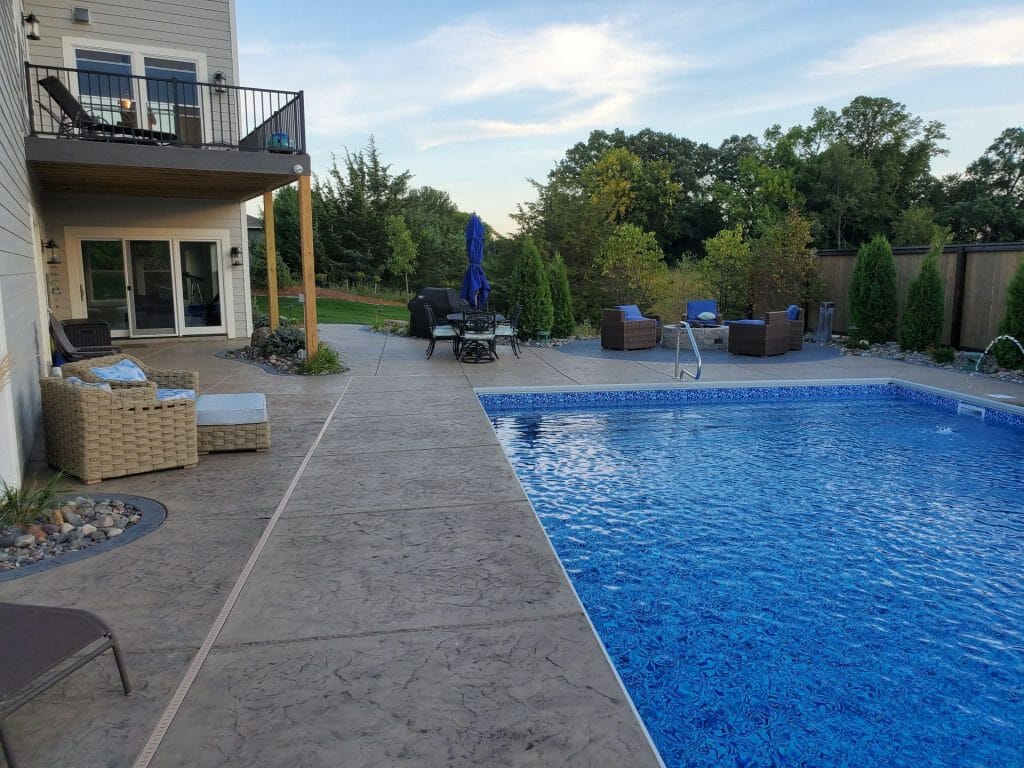
Concrete is known for its exceptional strength and resilience. Unlike wood, which can rot, or natural stone, which can shift over time, concrete can withstand various weather conditions with minimal wear and tear. Durable garden walkways ensure longevity and require fewer repairs compared to other materials.
Compared to natural stone or wood, low-maintenance walkways made of concrete require minimal upkeep. Occasional cleaning and sealing help maintain their appearance and structural integrity, eliminating the need for frequent replacements or repairs.
One of the biggest benefits of custom concrete designs is the ability to tailor them to your unique style. Homeowners can choose from a variety of colors, textures, and patterns to complement their existing garden landscaping ideas. Incorporating engraving or stenciling is also an option, as is selecting finishes that complement the garden’s overall theme. Borders, lighting, and plant arrangements can further personalize the walkway for a cohesive landscape design.
Exposed aggregate concrete provides a unique textured finish that improves traction, reducing the risk of slipping. It also offers a distinctive decorative look by revealing natural stones within the concrete mix, making it a popular choice for stylish outdoor walkways.
When selecting a design for your concrete garden paths, consider the various styles available to match your outdoor aesthetic. The main design options for concrete garden paths include stamped concrete that mimics natural materials, stained or colored concrete for an artistic touch, exposed aggregate for a textured look, and engraved or stenciled designs for a unique, personalized appearance.
Stamped concrete walkways use special molds and coloring techniques to replicate the look of brick, stone, slate, or tile. This allows homeowners to achieve the aesthetic of expensive materials at a fraction of the cost while maintaining the durability of concrete.
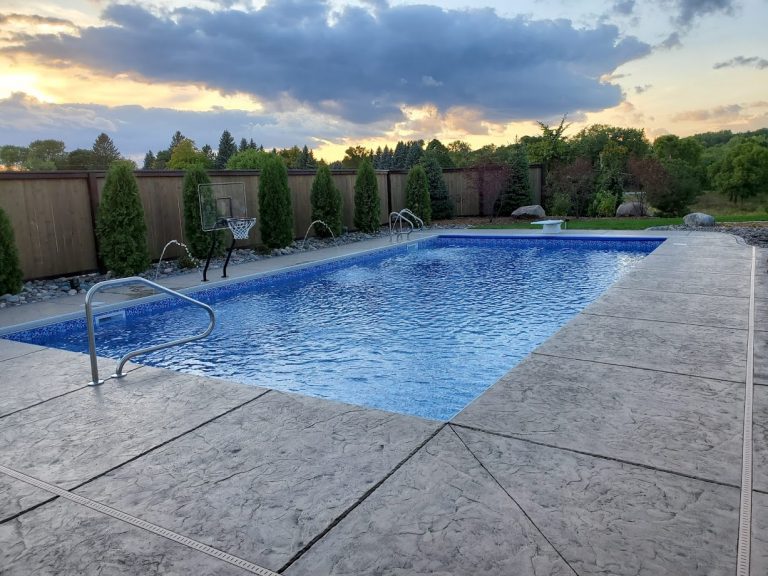
Stamped concrete walkways mimic the look of high-end materials like brick, slate, or tile. This cost-effective solution provides the beauty of natural stone without the high price tag or extensive maintenance.
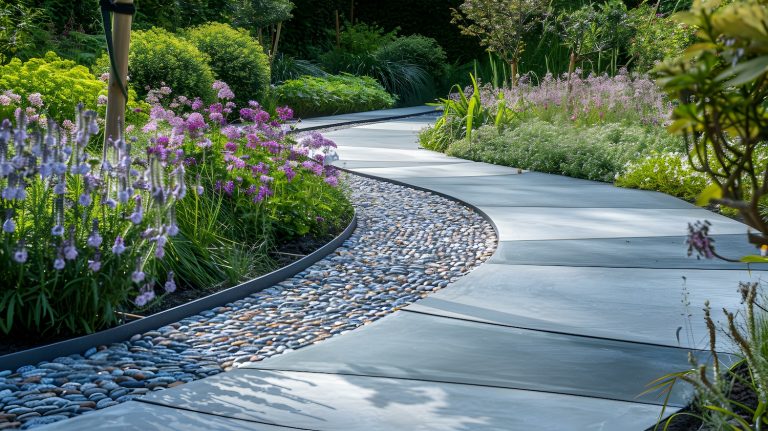
For homeowners seeking a vibrant and artistic look, stained or colored concrete adds character to outdoor spaces. These finishes can replicate earthy tones, bold hues, or even marble-like effects, creating stylish outdoor walkways.
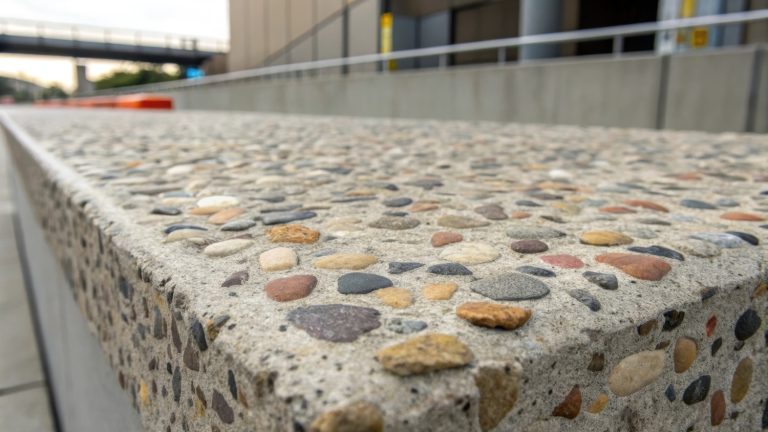
Exposed aggregate concrete showcases the natural beauty of stone and pebbles within the concrete mix. This textured finish not only enhances grip, making it safer for foot traffic, but also adds a unique, organic appeal to walkways.
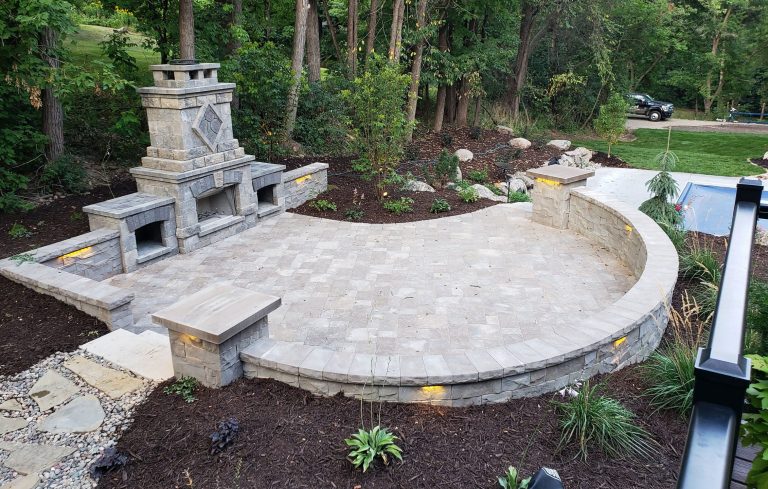
Engraving or stenciling allows homeowners to add personalized details to their walkways. These techniques create intricate patterns, logos, or motifs, making walkways stand out as artistic elements in a landscape.
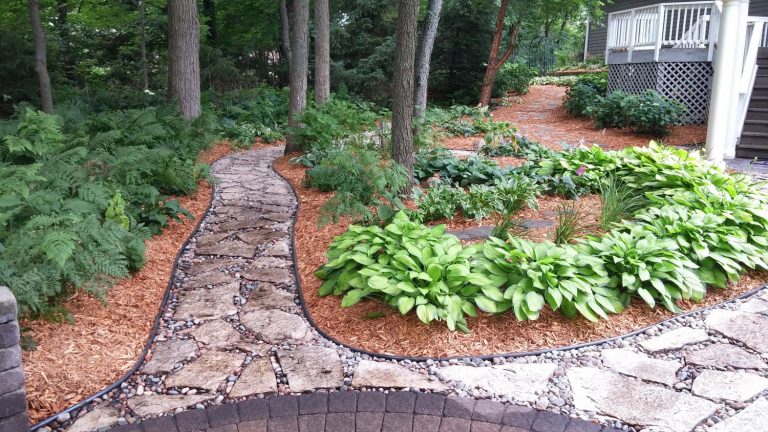
A stepping stone path is a stylish and functional way to enhance any garden or outdoor space, combining natural beauty with easy maintenance. This design features large stone slabs set in a bed of sand or fine gravel, with smaller pebbles filling the gaps for a seamless, organic look. Popular in Japanese gardens and modern landscapes, this type of walkway offers a stable yet permeable surface that blends harmoniously with its surroundings.
Proper planning and installation are essential to ensure the longevity and effectiveness of decorative concrete walkways. Concrete walkway installation done correctly ensures durability and longevity, making it essential to follow best practices such as site preparation, reinforcement, and sealing.
While a DIY concrete walkway installation can save money, it requires proper knowledge of site preparation, mixing, pouring, and finishing. Hiring a professional ensures a high-quality, long-lasting result with fewer chances of cracks or uneven surfaces. The decision ultimately depends on budget, skill level, and project complexity.
Before installation, consider the best layout for your space. Do you prefer curved paths that follow the natural flow of the garden, or do you want straight, structured walkways? Integrating walkways with existing garden features, such as flower beds or water elements, enhances their overall aesthetic appeal.
A well-prepared foundation is crucial for preventing cracks and shifting. Proper grading and compacting of the soil help maintain stability. Adding a reinforcement mesh or rebar can further strengthen the structure.
While DIY concrete walkways can be a rewarding project, professional installation ensures precision and longevity. Hiring a professional can be beneficial for intricate designs or large-scale projects, whereas DIY enthusiasts may opt for simpler styles.
To maximize the visual appeal of your walkways, consider integrating landscaping elements. Adding plants along the edges, installing pathway lighting, and incorporating decorative borders can enhance the visual appeal of a concrete walkway. Strategic landscaping can also create a seamless integration between the walkway and the overall garden design.
Using shrubs, flowers, or decorative grasses along the edges of your walkway adds color and depth. Borders made of stone, bricks, or lighting can further enhance the design and create a cohesive outdoor theme.
Your walkway should complement your garden’s theme. Whether you prefer a modern, rustic, or classic design, choosing the right concrete style ensures that the walkway seamlessly blends with the surrounding landscape.
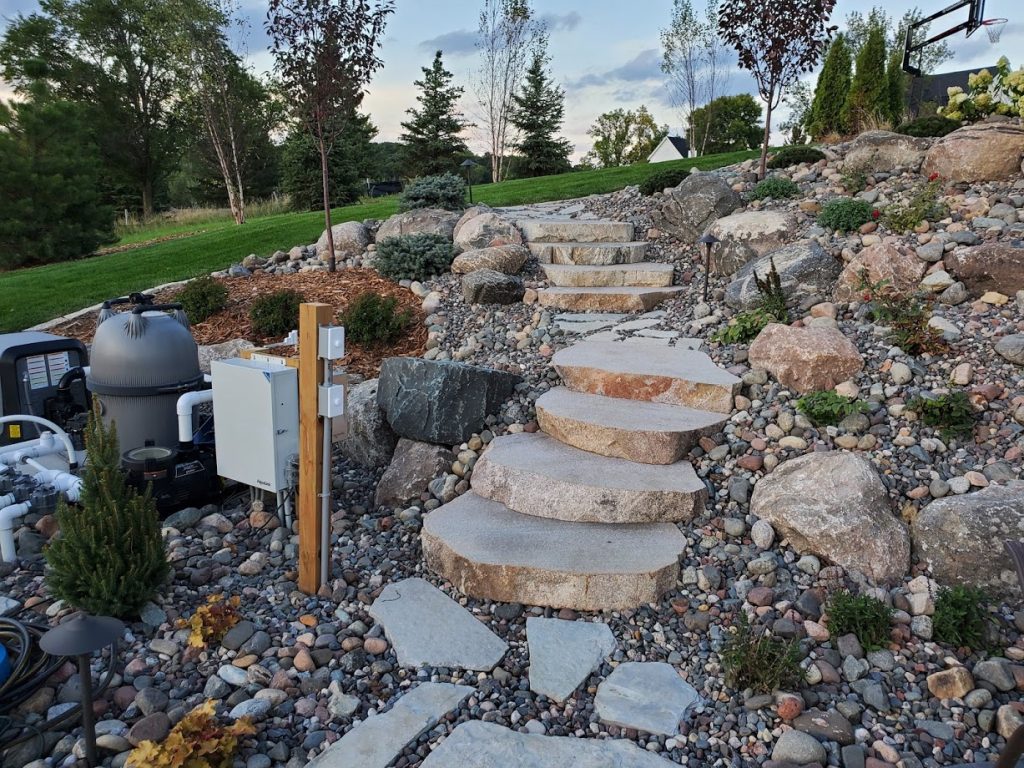
Several factors influence the cost of concrete walkways, including the size of the path, complexity of the design, type of finish (stamped, exposed aggregate, stained), labor costs, and regional pricing variations. Additional elements like borders, curves, and custom engravings can also impact the final price. To keep decorative concrete walkways in good condition, homeowners should seal the surface every few years, clean it regularly to prevent dirt buildup, repair minor cracks promptly, and avoid using harsh chemicals that may damage the finish.
The cost of concrete walkways varies depending on factors such as design complexity, materials, labor, and the size of the project. On average, homeowners can expect to spend around $6 to $15 per square foot, with averages of high-end decorative options reaching up to $25 per square foot.
Maintaining low-maintenance walkways involves simple yet effective steps:
Decorative concrete walkways offer a beautiful way to enhance the style and functionality of your garden. Their durability, customization options, and low-maintenance nature make them a worthwhile investment. Whether you opt for stamped concrete walkways, exposed aggregate concrete, or custom concrete designs, these stylish pathways can transform your outdoor space.
To explore design possibilities visit Tracer Pool & Landscape’s Gallery, or for professional assistance, contact us for expert guidance.